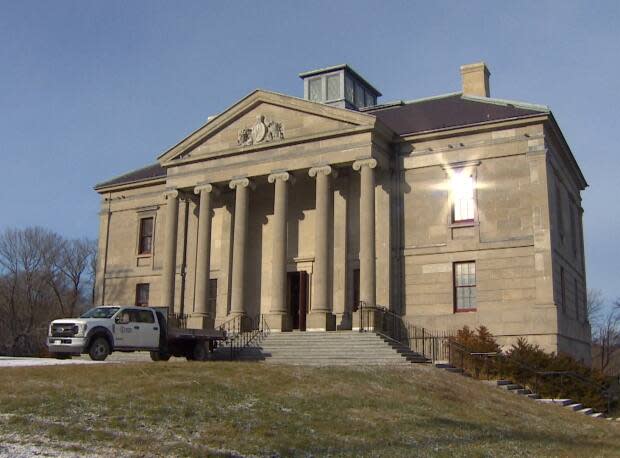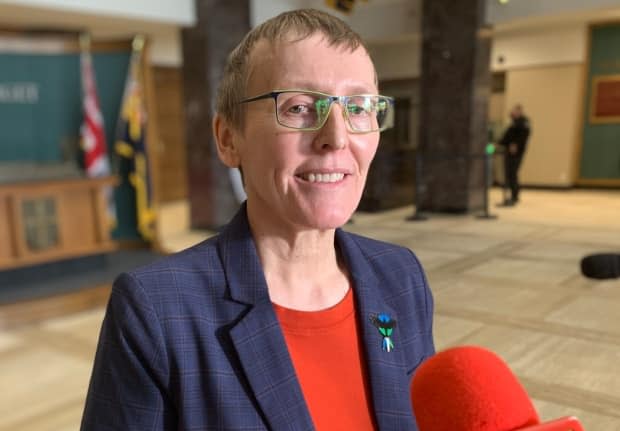After N.L. opts not to rename Colonial Building, Indigenous groups say decision is a step back


At least two Indigenous organizations are disappointed by the Newfoundland and Labrador government's decision not to rename the Colonial Building, a provincial historic site in St. John's.
In a statement Monday, the provincial government said following public consultation it has opted not to rename the building, which acted as the legislature for the Dominion of Newfoundland and, after Confederation, the province of Newfoundland from 1850 to 1959.
In March, CBC News learned the provincial government was considering renaming the former provincial legislature, which has been under a $22-million renovation since 2010. The change would have been one of several changes made by the provincial government in the name of reconciliation.
"A significant number of comments provided online and in written submissions indicated a strong feeling that changing the name of Colonial Building may be interpreted as an effort to erase or whitewash the colonial history of Newfoundland and Labrador," said the Department of Tourism, Culture, Arts and Recreation in a consultation summary.
In a statement, a spokesperson for the Nunatsiavut government said the decision "flies in the face" of true reconciliation.
"The fact non-Indigenous people do not want the name of the building changed should not have come as a big surprise, simply because the vast majority have no understanding whatsoever about what reconciliation with Indigenous Peoples really means," said the spokesperson.
According to the provincial government, the department sought public feedback through an online survey and received 215 online submissions and eight written submissions. Just six per cent of respondents, or about 13 people, self-identified as Indigenous.
A statement from First Voice, a coalition led by St. John's Indigenous advocacy organization First Light that supports the abolition of colonialist symbols, criticized the decision and consultation process.
"Although we support public consultation and conversations that engage non-indigenous peoples, we also believe strongly that decision-making about reconciliation and decolonization must prioritize Indigenous voices and those who have lived experience of colonization," said the statement.
No consensus: province
Nunastiavut called on the government to reverse its decision, noting the negative connotations associated with the word "colonial."
"Reconciliation is not comfortable. By its very nature, it means having to make decisions that are not always popular, but necessary in order to ensure the interests of marginalized members of society are respected and protected," said the statement.
According to the Tourism Department, 69 per cent of respondents disagreed with changing the name, while 26 per cent agreed. The remainder expressed no preference. The department said some respondents were concerned the continued use of the name would cause harm. In response to a question about potential alternate names, the most popular was "Parliament House," with 40 per cent of respondents voting in favour.

Tourism, Culture, Arts and Recreation Minister Steve Crocker said Monday that in addition to the public survey, the provincial government consulted with Indigenous organizations and governments.
"We weren't able to achieve a consensus at this time," Crocker said.
He said the Colonial Building, which is set to reopen in September, will have space for Indigenous history.
"It's very important that we tell the story of governance in Newfoundland and Labrador, not just the governance that would have happened at the Colonial Building, but as well the Indigenous governance," he said.
In recent weeks, hundreds of felt squares attached to the fence surrounding the building — placed there as a memorial after as many as 200 potential unmarked graves were found at a former residential school in B.C. — have been removed.
Crocker said the fence's condition has deteriorated, and it has to be painted or possibly removed. He said the people who attached the squares removed them in consultation with the department.
'It's complicated'
Lela Evans, NDP MHA for Torngat Mountains, said she had mixed feelings about the provincial government's decision not to rename the building.
"It's complicated. I don't want them to just erase the name of the building and then forget about all the harms that [are] still in existence," she said.

Evans said she wants to see improvements to health care, food security, infrastructure and travel in her district, which has a primarily Indigenous population. CBC News reached Evans in Makkovik, a community in northern Labrador accessible only by boat or air.
"I would like to see a day where the colonialistic practices and the past harms are no longer impacting the Indigenous people of this province, and then it will be a success," she said. "Then we could actually just let the, you know, the name 'Colonial' disappear into the sunset."
First Voice declined an interview but called for government action in critical areas like health care, education, employment, housing and justice.
"We also call on the provincial government to move beyond mere symbolism and take more substantive action to decolonize public policy," said the statement.

 Yahoo Movies
Yahoo Movies 
